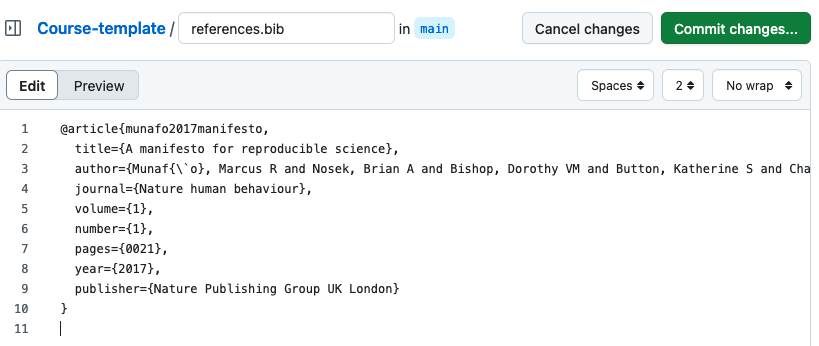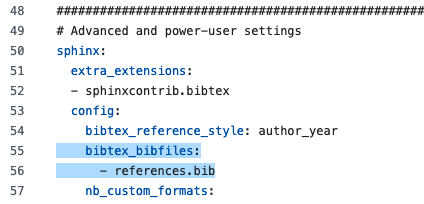Adding Citations and Bibliographies#
To include citations in your course website, begin by creating a BibTeX file to store your references. Then, check the _config.yml file to ensure that the file is linked correctly. Once set up, you can easily add citations and generate a bibliography to enhance your course content.
Create a Bibliography#
Create a new file in your repository and save it with the .bib extension to create a BibTeX file.

Then, add your references to the file and click on “Commit changes”.

Check the Config File#
Open the _config.yml file and ensure that the linked BibTeX file is correct. By default, its name is “references.bib”.

Note
If the file is located in a different folder, make sure to include the correct path.
Add a Citation#
Now, you can include your citations into your text with help of the {cite} role. Here is an example:
{cite}`munafo2017manifesto`
Result: [Munafò et al., 2017]
Add a Bibliography#
To add a bibliography, you need to use the {bibliography} directive at the end of your page:
```{bibliography}
```
At the end of this page, you will see an example bibliography.
Next Section:#
In the next section, you will learn how to adapt the Table of Content file in order to structure your online course.
References
- MunafoNB+17
Marcus R Munafò, Brian A Nosek, Dorothy VM Bishop, Katherine S Button, Christopher D Chambers, Nathalie Percie du Sert, Uri Simonsohn, Eric-Jan Wagenmakers, Jennifer J Ware, and John PA Ioannidis. A manifesto for reproducible science. Nature human behaviour, 1(1):0021, 2017.
